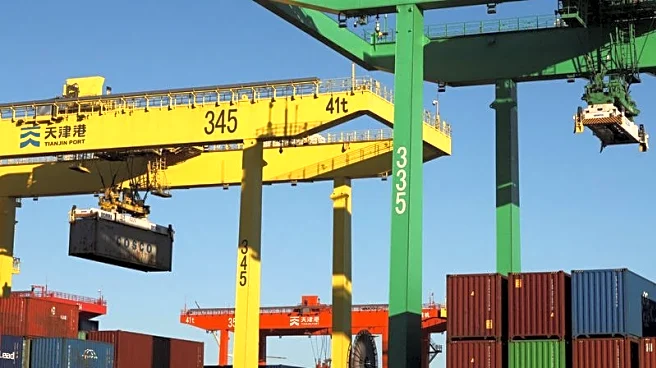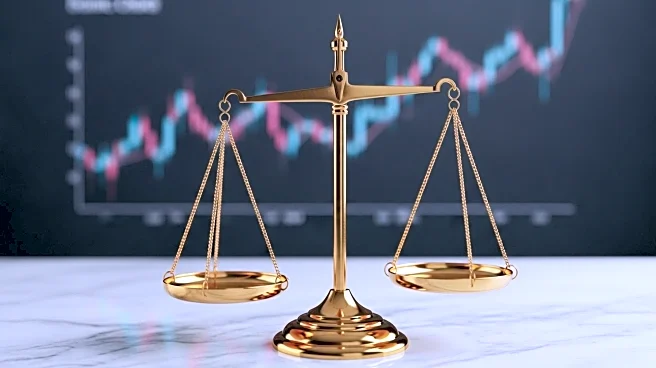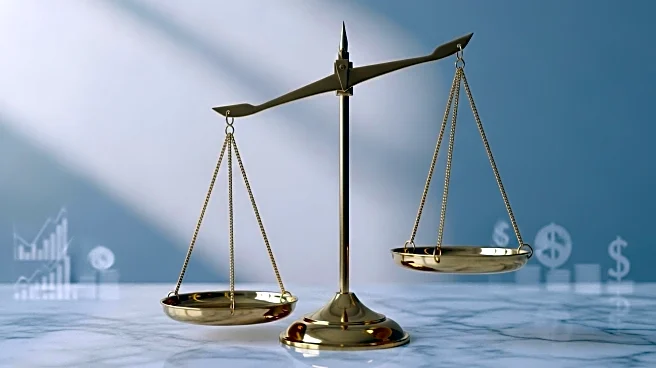What's Happening?
The Organisation for Economic Cooperation and Development (OECD) has released its latest Economic Outlook Interim Report, indicating that the full impact of U.S. tariff hikes is still unfolding. The report highlights that firms have been absorbing much of the shock through narrower margins and inventory buffers. The Trump administration's tariff hikes have raised the effective U.S. rate on merchandise imports to an estimated 19.5% by the end of August, marking the highest rate since 1933. Despite these tariffs, U.S. economic growth is forecasted to slow to 1.8% in 2025, slightly up from the previous forecast of 1.6%, before easing to 1.5% in 2026. Factors such as an AI investment boom, fiscal support, and interest rate cuts by the Federal Reserve are expected to mitigate the impact of higher tariffs, a drop in net immigration, and federal job cuts.
Why It's Important?
The unfolding impact of U.S. tariffs is significant as it could affect investment and trade growth, potentially lowering economic growth by raising production costs. The OECD's forecast suggests that while the U.S. economy is experiencing a slowdown, it is buffered by technological investments and fiscal measures. This situation underscores the delicate balance between protectionist policies and economic growth. The tariffs could lead to prolonged policy uncertainty, affecting businesses and consumers alike. The broader implications include potential shifts in global trade dynamics, as countries adjust to the new tariff landscape and its effects on international commerce.
What's Next?
As the effects of the tariffs become clearer, firms may continue to adjust their strategies, potentially leading to changes in inventory management and production costs. The OECD anticipates that major central banks, including the U.S. Federal Reserve, may lower borrowing costs or maintain loose monetary policies to support economic growth. This could involve further interest rate cuts if inflation pressures ease. The ongoing adjustments in monetary policy will be crucial in navigating the economic challenges posed by the tariffs and maintaining stability in the labor market.
Beyond the Headlines
The tariff hikes could have long-term implications for U.S. trade policy and international relations. As firms adapt to higher production costs, there may be shifts in supply chain strategies, potentially leading to increased domestic production or sourcing from alternative markets. Additionally, the tariffs could influence political discourse around trade policies and economic strategies, impacting future legislative decisions and international negotiations.











